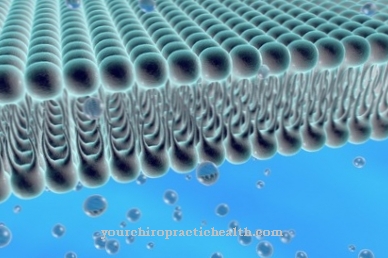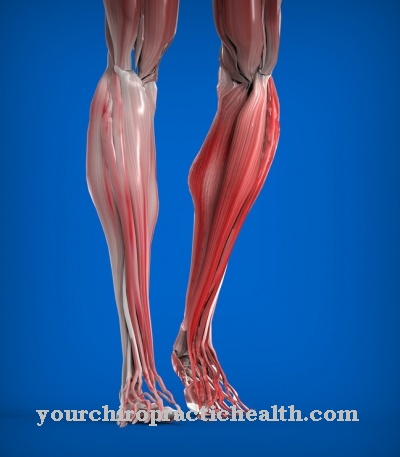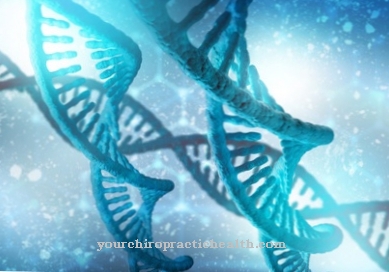In the past, the term gender, especially in the German-speaking area, exclusively referred to the biological differences between men and women.
In the meantime the need to include psychological and social aspects of gender has been recognized.
In the context of gender research, the transitional forms of gender are also increasingly being considered. The image of a scale is increasingly emerging in which the previously rigid gender categories of man and woman can be viewed, for example, like the color gray, which extends from black to white.
What is the gender

In the German-speaking area, the term gender has so far characterized the biological differences between men and women. In English usage, however, the term gender is more broadly defined as gender. In addition to biological aspects, gender also includes psychological and social aspects in the definition of gender.
The purely biological definition distinguishes between genetic, hormonal and organic levels of the term. The genetic sex is determined by the chromosomes. The gonadal sex is determined by the hormones and the genital sex by the sexual organs.
However, these definitions cannot describe the transitional forms between the sexes. Because for some people the gender cannot be clearly determined because they have biological properties of both sexes. For example, a person's chromosomes can indicate a male gender, while the hormonal balance assigns the same person to the female gender.
Cases of this kind reveal the weaknesses of the classic definition of gender, which can only attest those affected people a disorder without actually having biological disadvantages. In many cases, however, those affected then suffer psychologically, as they are given the impression that they are abnormal.
Function & task
The biological sex of an organism is determined genetically and hormonally. Biological functions are connected with the development of the primary and secondary genital organs. The woman's physique allows her to carry a child. The child is cared for by the mother during pregnancy and after birth through breastfeeding.
In the Leydig cells of the testes, men produce reproductive seeds that are passed on to women during sexual intercourse. This underlines the importance of different biological sex characteristics. However, it does not mean that, conversely, men and women have to be fundamentally different in nature or that people who are incapable of reproduction have an alleged sexual disorder.
The genetic sex is determined by the chromosome distribution of the sex chromosomes. The woman has two X chromosomes and the man one X and one Y chromosome. On this basis, hormonal processes are triggered during human development which determine the primary and secondary sexual characteristics.
The sex hormone testosterone is responsible for the development of the primary and secondary male sexual characteristics. The female sex hormones (the estrogens and progestins) determine the development of the secondary female sexual characteristics such as breast growth or menstruation.
The female phenotype arises automatically when no testosterone is present or does not work. Primary and secondary sex characteristics can develop through genetic determinations and biological regulation mechanisms. Intersex characteristics, in which both female and male characteristics appear, are also subject to these biological processes.
However, there are also psychological and socio-culturally shaped gender differences that are counted among the tertiary gender characteristics. They express themselves in supposedly gender-specific behavior. However, the tertiary gender characteristics vary depending on the culture. Here society determines male and female role behavior.
Gender research therefore examines the influences of society, psychology and biology on gender identification. Transgender people do not identify with their biological gender and often want to have it adjusted through gender reassignment. The role of hormonal processes in certain development phases or socio-political and cultural influences is also examined in the context of gender research.
Scientifically, it is becoming increasingly clear that the determination of gender depends on several factors. In this context, the differences between intersexuality and transsexuality can also be pointed out: In intersexuality, there are both female and male gender characteristics, or no clear gender characteristics at all. In the case of transsexuality, the biological gender does not correspond to the psychologically perceived gender.
Illnesses & ailments
It is not always easy to determine which characteristic deviations from the biological sex are to be assigned to a normal variation in sex or an underlying disease. Intersex expressions can be caused by the chromosome distribution, gene mutations or hormonal deviations.
The chromosome distribution disorders include Turner syndrome, Klinefelter syndrome or mosaic.Turner syndrome only has one X chromosome. Another sex chromosome is missing. The affected person outwardly develops a female phenotype and is short. Sexual maturity does not occur. Furthermore, lifelong medical treatment is necessary because there is a risk of additional developmental disorders.
In Klinefeldter syndrome, the person affected has two X chromosomes and one Y chromosome. A male phenotype develops. It is only in puberty that it becomes clear that the typical male characteristics do not occur. Sperm production is reduced by a lack of testosterone.
Furthermore, there are intersex people with the training of both male and female sex organs. In medicine, it is spoken of hermaphroditism verus (true hermaphrodite). Hermaphrodites can also give birth or father children, although self-insemination is not possible. Little is known about the cause of this form of intersexuality.
In complete androgen resistance (CAIS), a person with a male set of X and Y chromosomes develops a female phenotype from the start. With this phenomenon, the male sex hormone testosterone is formed, but the receptors that can absorb it are missing. Furthermore, there are so-called hormonal disorders that can lead to masculinization in women and feminization in men.
























.jpg)



